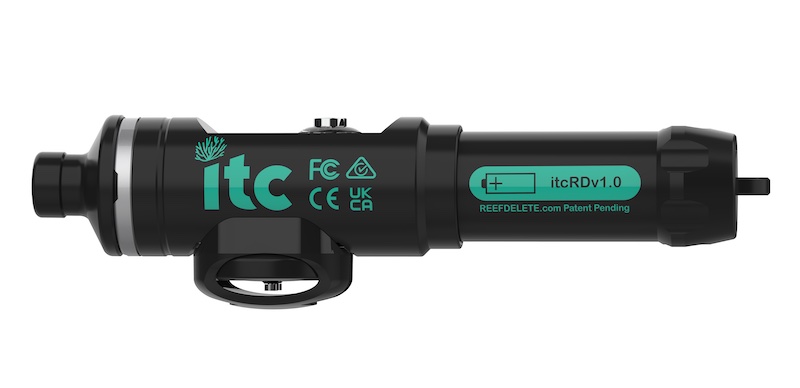The Reef Delete is a flashlight unlike anything the aquarium hobby has ever seen before as instead of being designed to help you see things, it’s actually designed to help you not see certain things. What we mean by that is that the Reef Delete is not made for viewing but instead made for sterilizing certain pests from your reef tank by zapping them with a sterilizing dose of ultraviolet radiation.
This new pest eradication tool couldn’t be any further from a simple waterproof flashlight with UV LEDs as it was thoughtfully designed from the ground up to be extremely powerful but also extremely safe. The Reef Delete will not turn on unless it’s held underwater and an included snoot helps to keep the UV rays focused on unwanted pests such as aiptasia, majanos but we’re extremely excited to see how it performs on algae, hydroids, sponges, weedy corals, Xenia and basically anything that might constitute undesirable growth in a reef tank.
Reef Delete is a New Way to Sterilize Aiptasia and Other Pests
Reef Delete manufacturer ITC Reefculture has some big claims to fulfill – we have no doubt that a pseudo-laser of ultraviolet radiation can downright kill anything it’s pointed it at but its efficacy will have to be proven in the real world settings, across many applications and reef tanks, especially with a hearty $399 price tag. We’re still waiting on our first review sample to arrive but in the meantime it appears that Premium Aquatics is the first company to get their hands on the new device and start offering them for sale to the public.
The reef aquarium hobby has developed a variety of different techniques for dealing with unwanted pests but all of them have specific limitations and this adage will undoubtedly hold true with the Reef Delete. We are very enthusiastic about the potential for Reef Delete so we can’t wait to put it through its paces but adventurous reefers who want to take it for a spin can get their own Reef Delete from the limited supply now available at Premium Aquatics.



